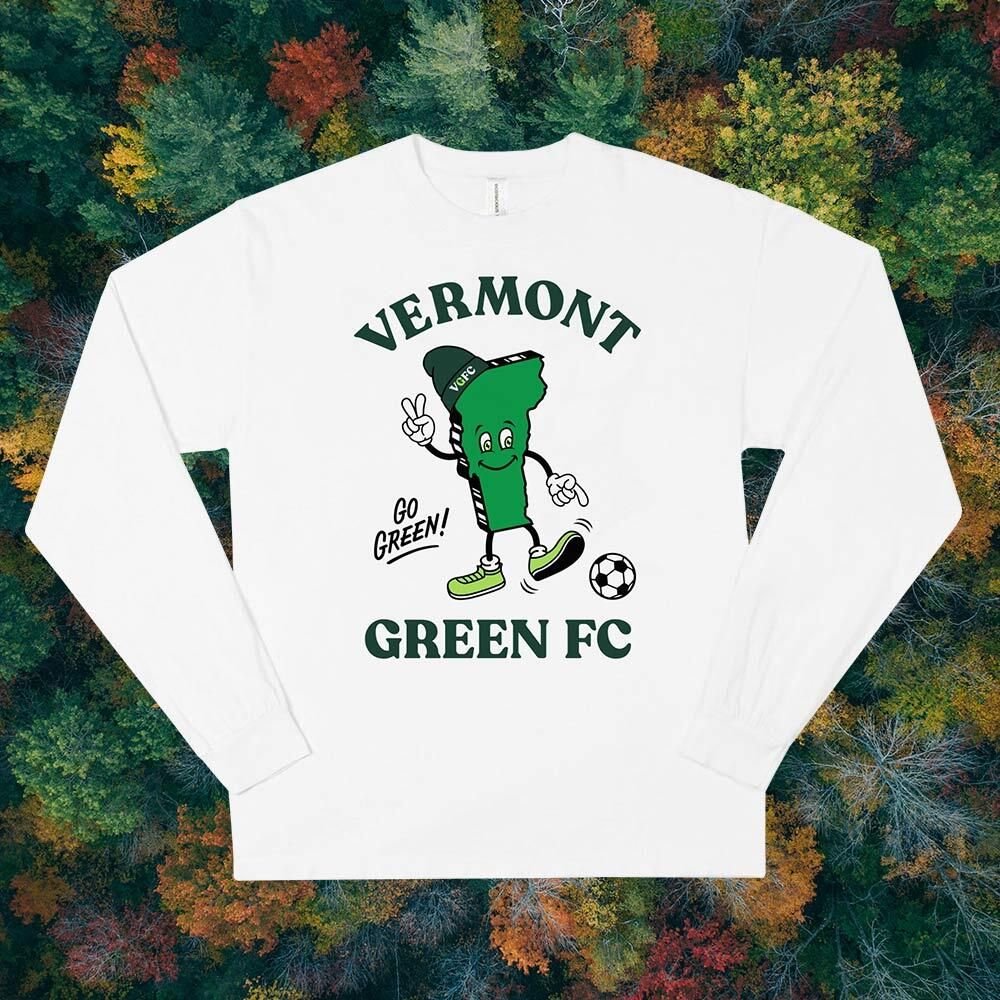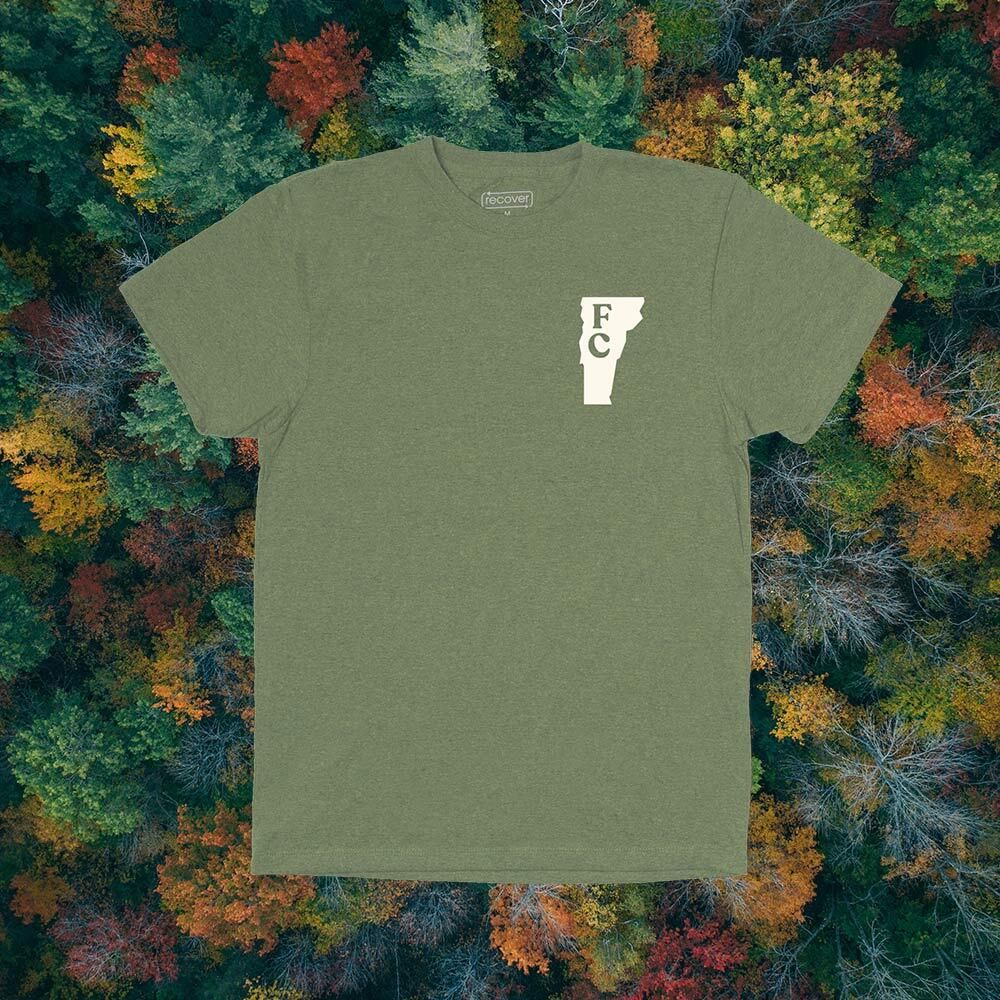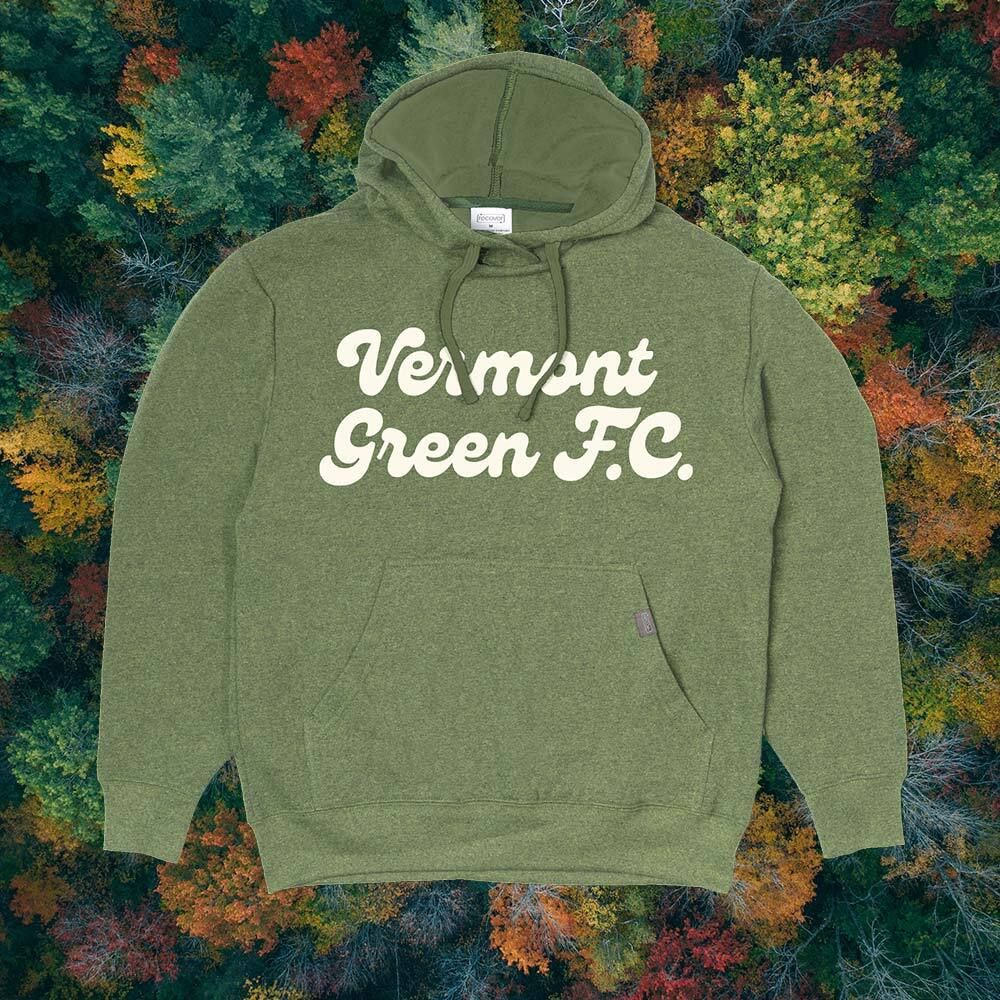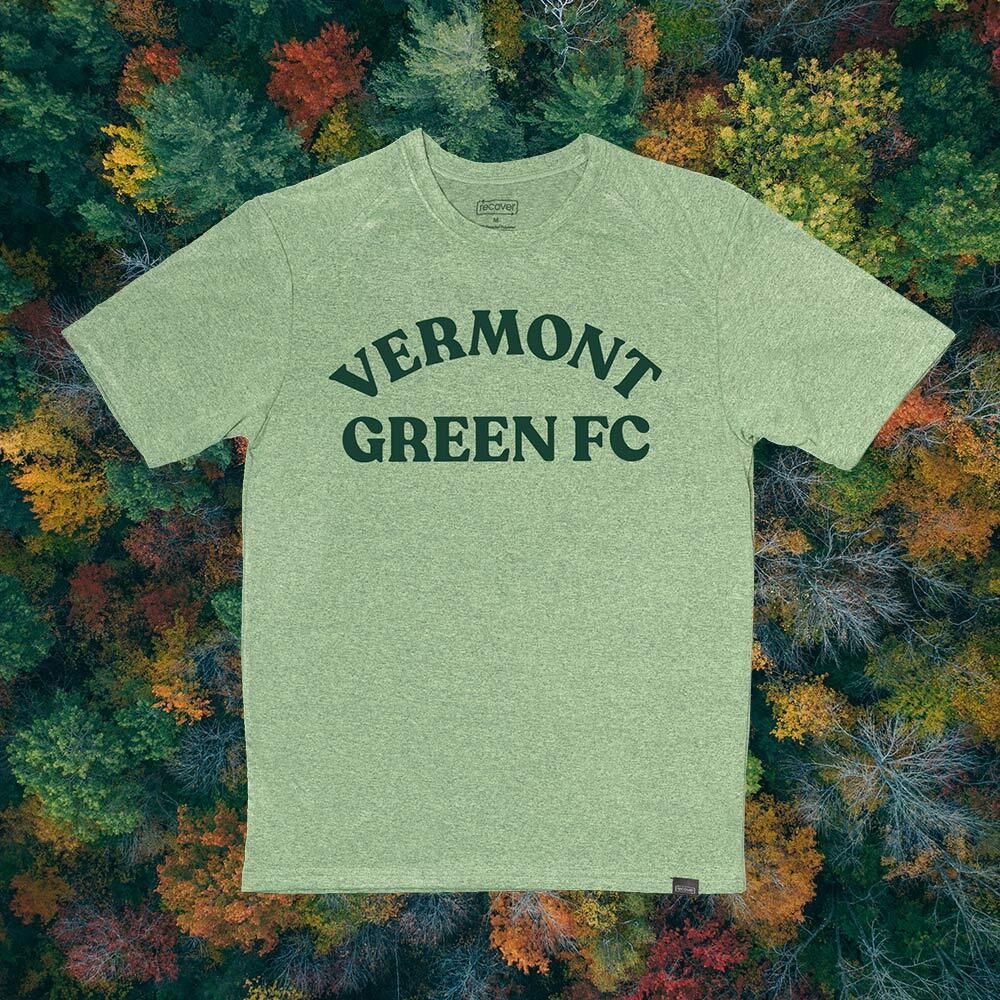Clothing is one of society’s great storytellers. We dress ourselves according to personal tastes, professions, culture, community, religious beliefs, and, increasingly, our values. Soccer fans understand this as well as anyone. The jerseys we wear broadcast our sports allegiances and our passions, fond memories, and the places we’ve traveled. Clothing can be meaningful or vapid, a source of pride, or leave us wanting more.
We set out on a mission to imbue our kits and apparel with meaning and to be a source of pride for all who wear them. There is a much deeper story to our merchandise, one of interconnectedness and appreciation for the people and ecosystems that were responsible for putting clothes on our backs. Truthfully, we still have a lot to learn, but what is certain is that our choices about the kinds of clothes we buy makes a significant difference in the impact we have on the planet and on the lives of the people who make them.
Considering environmental justice before we make our purchases allows us to make more informed choices and have a more positive impact on the world. The scale of environmental and ethical problems that plague the fashion and apparel industries is genuinely disturbing. Human rights abuses, toxic chemical pollution, waste, plastic pollution, and carbon pollution are all well documented. Consider this:
- We burn or landfill one garbage truck of clothing every second, which is enough to fill 1.5 Empire State Buildings every day.
- It takes 2,700 liters of water to produce one non-organic cotton shirt, which is enough water for one person to drink for 2 ½ years.
- 20% of global industrial water pollution is due to the dyeing and treatment of textiles.
- The fashion industry is responsible for about 10% of global carbon emissions.
- Garment workers in Bangladesh make about $96 per month, which is 3.5 times less than what is needed for a “decent life with basic facilities,” according to the Bangladesh government. This issue extends to other countries as well.
- It has been estimated that around half a million tonnes of plastic microfibers are shed during the washing of plastic-based textiles such as polyester, nylon, or acrylic and end up in the ocean annually.
- There is evidence of forced and child labor in many countries around the world.
The scale of environmental degradation and ethical corrupt practices has grown as the industry’s business model changed in the early 1990s to ‘fast fashion’, which prioritizes inexpensive and lower quality products to accommodate more seasonal trends and incentivize greater consumption. As a business model, it only makes sense because we don’t currently account for the costs it charges to our planet and the people who make the clothing. As consumers have become more aware of these negative byproducts (also known as negative externalities), a growing movement has emerged to change this model at every level of the value chain. How we cultivate the raw materials, manufacture, design, distribute, and dispose of our clothing must all change. We also have to question our consumption habits.
Environmental Responsibility
We asked ourselves, is it more environmentally responsible to not sell merchandise at all and make a statement about the negative byproducts embedded in the fashion industry and an economic model predicated on ever-increasing consumption, or join with the enterprising people working to transform the industry? As a club that’s focused on the long-term, and transforming the status quo, we decided we couldn’t sit on the sidelines. Instead, we are working to reduce our impact by considering the entire life cycle of our apparel. How we do this is by intentionally designing garments for longer lives, sourcing fabrics from environmentally and ethically responsible sources, and pursuing innovative models to keep our apparel in use and out of landfills for as long as possible. These efforts are intended to contribute to systemic change, which is why we are partnering with companies who are paving the way in these areas. We’ve learned a lot since we started and what follows is our effort to be transparent about where we are in developing responsible guidelines for product development.
Organic Cotton
Cotton is the world’s most popular natural fiber. Around 99% of that cotton is conventionally grown, and at 25 million tons of annual production, the environmental footprint is significant. Despite using only 3% of the world’s farmable land, conventional cotton is responsible for 16% of global insecticide use. These chemicals, over the last 25 years, have made U.S. agriculture almost 50 times more toxic to honeybees and other beneficial insects. Transitioning to organic cotton can have a major positive impact on the environment.
Choosing Global Organic Textile Standard certified cotton compared to conventionally grown cotton means we:
- Support 30% more species and 50% more pollinators.
- Build soil health through greater biological activity, soil stability, water retention, and sequester 26% more CO2.
- Reduce CO2 emissions by 45% and 90% reduction in water use
- Use 50% less reactive nitrogen. Reactive nitrogen is a term used for a variety of nitrogen compounds that all have environmental and human health impacts. Nitrogen runoff into rivers and streams causes eutrophication and algae blooms in lakes and coastal areas. Nitrate in groundwater has been directly linked to blue baby syndrome. Nitric oxide and nitrogen dioxide contribute to smog and haze and have been linked to asthma in children and adults. Nitrous oxide is a greenhouse gas that is 265 times more potent than carbon dioxide and contributes to acid rain.
- Can recycle and upcycle the fabric easily.
- Can compost the fabric at the end of its life.
- Don’t contribute to plastic waste. In a recent study, plastics were found in 98% of juvenile seabirds and it’s estimated that 99% of seabirds will have ingested plastic by 2050. And plastics aren’t just affecting our oceans. 120 million plastic water bottles worth of microplastics have fallen in rain on 11 protected areas around the U.S.
Recycled Polyester
Polyester is the world’s most popular synthetic fabric and is derived from petroleum. Ethylene polyester (PET) is the most popular type in the market. Recycled polyester (rPET) is made from melting down and reusing recycled PET, typically from plastic bottles and containers.
Compared to using virgin PET, using rPET means we:
- Decrease our demand for petrochemicals
- Use less energy in production
- Dramatically reduce greenhouse gases
- Significantly reduce water use
- If returned into a circular program, we can divert plastic from landfills and oceans
Ethical and Responsible
Since Jeffrey Ballinger first exposed Nike’s use of sweatshops in Indonesia in the early 1990s, society has steadily become more aware of the ethical implications tied to the clothes we buy. More recently, the 2013 Dhaka garment factory collapse that killed 1,134 people and injured approximately 2,500 others, reminded the world of the horrible consequences of not doing more to ensure stronger labor and human rights mandates in our global fashion supply chain. Thankfully, more companies are being transparent about their supply chains, but much more needs to be done.
Despite growing transparency in global supply chains, we’ve learned that social and environmental information can still be elusive due to a lack of credible third-party verification. Gratefully, many companies have done a lot of work to establish more robust tracing in their supply chains, which are often shared by many companies, including our little shop. The growth and sophistication of organizations that track environmental and social standards in supply chains – like Fair Trade and Global Organic Textile Standard – has allowed for this. Interestingly, COVID19’s massively disruptive effect on global supply chains has gotten a lot of media attention and made many of us more aware of the realities and complexities of global commerce, and just how interconnected and interdependent we all are. We hope this will translate into a more informed and socially and environmentally conscious public and an even greater demand for this kind of information.
In our search for ethical apparel options, two brands stood out. Econscious’ commitment to verifiable sustainability practices was one of the strongest we found. Their Code of Conduct provides a good example of the high standards they set for their products:
All the factories we work with are required to sign our Workplace Code of Conduct Agreement designed to ensure compliance to wage, child labor, overtime, health, safety, and environmental regulations. Regular factory audits are conducted by Elevate.
Workplace Code of Conduct: The health and well-being of our natural and social environments is the cornerstone of the econscious mission. We make every effort to utilize materials and processes that minimize the impact that we have on the planet as well as the health and safety of those who make our products. Econscious vendors, subcontractors, suppliers, and business partners agree in writing with our workplace standards and the applicable laws of the country of manufacture, as well as to the monitoring of such compliance.
These are the kinds of commitments and compliance protocols we look for in our vendors. Of course, we are always seeking vendors who are taking environmental and social responsibility to the next level. If you have suggestions for vendors we should consider for our kits or apparel, please email club@vermontgreenfc.com.
Going Circular
Once we agreed we could have a greater positive impact by selling merchandise and incentivizing a more sustainable model, we asked ourselves, what would the most sustainable merchandise offering look like? If you’ve read this far, you probably realize, as we did, there is indeed a lot of ground to cover. Because we decided to be bold in our mission from the start, we knew we couldn’t just pick away at the low-hanging fruit. Will going all organic cotton be the best way forward? What about recycled polyester? Isn’t there a need to stem the preponderance of plastic waste, perhaps turning it into something useful, extending its life, and keeping it out of landfills and oceans? The truth is, there is no single silver bullet, and all efforts towards addressing the negative externalities of the apparel industry are ultimately a step in the right direction.
However, there is indeed one lever, when pulled, that unleashes a cascade of positive outcomes that will lead us to systemic change in the way we buy and sell clothes. That lever is circularity, a concept that has emerged in the fashion and apparel industry. The Ellen McArthur Foundation, an organization leading the circular transformation in fashion and the rest of the economy, sets a compelling vision:
“A circular economy for fashion creates better products and services for customers, contributes to a resilient and thriving fashion industry, and regenerates the environment. It prioritizes the rights and equity of everyone involved in the fashion industry, and will create new opportunities for growth that are distributed, diverse, and inclusive.”
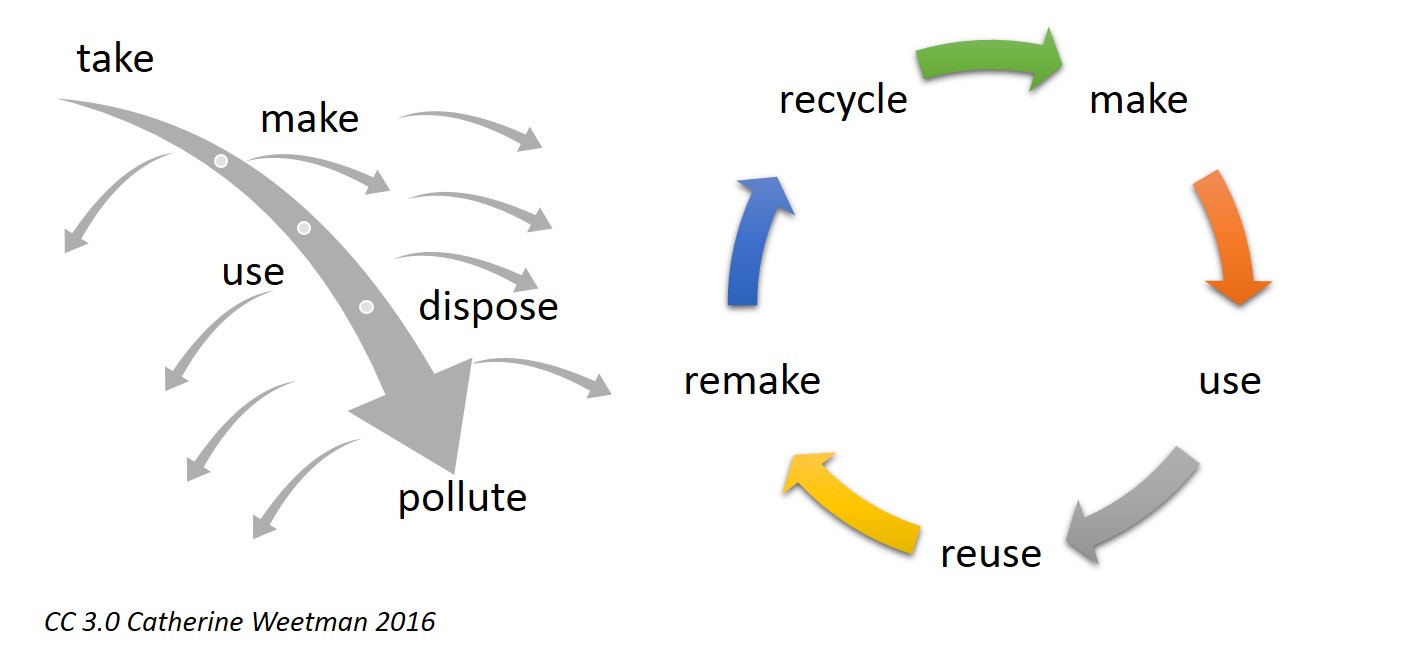
This is the vision we were looking for and, lucky for us, we found a partner who is leading the way in making circular clothing a reality today. Recover Brands is a North Carolina-based business that has developed the technology, operational processes, and business model to take back everything they sell and reuse it in the production of new products. We’ll be working with Recover and others going forward to help us realize our dream of offering fully circular apparel.
If you’re interested in learning more, we highly recommend checking out the resources at the Ellen McArthur Foundation.
Packaging
Packaging waste is a significant issue. As of now, 91 percent of packaging waste is sent to landfills and/or in the environment. Considering 9.2 billion tons of plastic have been produced, this is an Everest-sized problem that has to be addressed. There are ways anyone can reduce the waste they create, but this will not be enough to change the very unsustainable trajectory we have been on. Systemic changes, like the ones our New England neighbors in Maine have instituted at the state level are needed, taking the onus off of consumer behavior and putting the responsibility back on producers. We support this and believe we have a responsibility to make sustainability easy for our supporters, which is why we’re offering sustainable packaging from the beginning. We are working with Ecoenclose, which designs their packaging with circularity in mind, to select the best packaging possible to reduce waste and pollution.
Philanthropy
Philanthropy isn’t a novel idea in environmental and social responsibility. Some of you may be philanthropists in your own right, donating to nonprofits and causes that matter to you. Philanthropy for us serves multiple purposes. Giving back to our planet and society is important because there are costs – negative externalities – of doing business on this planet. The costs of climate change, loss of ecosystem services, loss of biodiversity, and other non-financial societal considerations are typically not included in the prices we pay for our goods and services under our current economic model. For negative externalities we cannot avoid, we feel it’s necessary to financially support the organizations working to mitigate these costs, while also helping us to transform our society by accounting for the health of our planet and society in our economy.
Philanthropy is also an investment in our long-term success. Having a healthy environment and society is good for our business. Probably the most obvious example of this is the negative effects COVID-19 has had on businesses around the world. At the same time, climate change is having dramatic impacts on businesses and our economy, and will only continue to transform our world into a very challenging environment to run a successful soccer club. For anyone who was around for Tropical Storm Irene in Vermont, the devastation was shocking. In July this summer, an eerily reminiscent story unfolded in Germany when once-in-a-millennium floods ravaged the country. Sadly, these extreme weather events are becoming more frequent and pose significant threats to the stability of communities and the economy.
Ambition to Action
We want the money you spend with us to have the greatest positive impact possible, so we’ve planned to make your money go further in several ways:
- We are donating 10% of profits from our pre-sale merchandise to the Vermont Natural Resources Council, Vermont’s oldest, independent environmental advocacy organization.
- We are a 1% for the Planet member, meaning we have committed to donating 1% of our annual sales to environmental organizations. Our pre-sale donations are just the beginning and we’re excited to partner with many fantastic organizations going forward.
- We have carefully selected an initial merchandise offering that includes fabrics that are environmentally and socially responsible.
- We are in the process of developing a circular model that will allow customers to return their purchases and keep them in circulation.
Changing our Consumption Habits
Rethinking our consumption habits is essential for systemic transformation. We have to change from a linear to circular model for our clothing. If all 7.6 billion of us on Earth consumed as much as the average U.S. consumer, we’d need around five Earths to sustain this consumption. The good thing is it doesn’t take much to make a meaningful difference. Simply wearing an item for 9 months longer reduces its carbon footprint by 30%. We are extremely excited by what we’re finding out there in the world of circular apparel and are currently exploring ways to embed this model in our merchandise in the future. If you work in this space or are just a big fan of circularity, we’d love to hear from you! Send us a note here at club@vermontgreenfc.com.
You can start today to change your consumption habits. Here are some options to learn about your closet’s environmental footprint and ways to become a more circular consumer:
- Fashion Footprint Calculator: Find out how dirty your closet is.
- ForDays will take all your old clothes (from any brand, in any condition) and make sure they never end up in landfills. You get guaranteed credits for your old clothes – no matter the condition. They close the loop by turning your old fabrics into brand new clothes. Aka we’ll pay you to help us eliminate clothing waste.
- ThredUP is an online consignment & thrift store, where you can constantly refresh your style while creating less waste.
- Drop your stuff off at a local consignment and thrift store.
- Donate your old clothes to a local non-profit.
- Repurpose your old clothes into something unique to you.
Thank You!
You make all of our work possible and we hope you’ll join us in advancing environmental and social responsibility in sport and at our club. We are an open door for feedback and are always interested in hearing from our community. And, as always, thank you sincerely for your support of our club, our vision, and our purpose.
Go Green!
